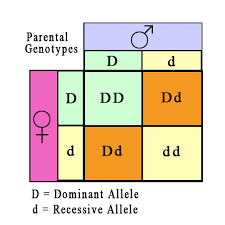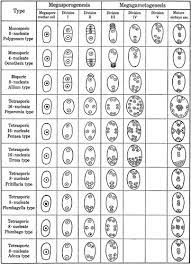ORNAMENTAL GARDENING- PARTS OF ORNAMENTAL GARDENING
ORNAMENTAL GARDENING AND PARTS
OF ORNAMENTAL GARDENING
DEFINITION:
A garden may be defined as an area embellished with the plants, a valuable and pleasurable adjunct to a house. A mere collection of plants will not make a garden. It is the skillful arrangement and disposition of plants over area making a design or pattern or picture as it were that forms a garden. Therefore, gardening warrants apart from knowledge of the science of plant growing, an artistic taste on part of the gardener.
PARTS OF ORNAMENTAL GARDENING:
LAWN:
Lawn is an important component of a garden. No garden is complete without the presence of a lawn.
SHRUBS AND SHRUBBERIES:
Groups of shrubs planted at corners will be useful in natural designs. Shrub borders of informal (allowed to-grow without trimming) or formal (trimmed to a height) can border the main walks and paths. A shrubbery is a border planted with different kinds of shrubs and a shrub border is where only one kind of shrub is used.
CLIMBERS AND CREEPERS:
Climbers and creepers are used to grow against or over walls, trellises, arches, pergolas, arbours, pillars or large trees. These climbers may be light or heavy depending upon the amount of wood they produce
.
TREES:
They form the main frame work of the garden. They are generally planted along the boundaries. Masses of trees in a corner will help to give and perspective. A spreading tree is an ideal feature for ‘picnic’ ground in a large public garden. Trees with beautiful or fragment flowers or handsome foliage or form and trees which provide adequate shade are grown in gardens.
FLOWER BEDS OR BORDERS:
Several flowering annuals and herbaceous perennials can be grown in beds and borders. Flower beds of simple designs can be laid out on the outskirts of lawn along the foundation of buildings, in the path leading to the entrance of the house and on sides of footsteps. Borders are continuous beds of more length and width containing plants of heterogeneous characters as distinguished from flower beds which are composed of plants of one kind only. Borders are named as ‘shrub border’, ‘herbaceous border’ or ‘mixed border’ according to the plant materials used to fill them. These borders can be had on the sides of path, walks and drives or in front of shrubberies and trellises with climbers.
ORNAMENTAL HEDGES:
A good live hedge is essential to enclose a garden. Ornamental internal hedge can also be planted inside the garden with attractive foliage or flowering shrubs. These are pruned to maintain a height of 50 to 60 cm. they help to divide the garden into a number of parts; each will have its own distinct features.
EDGES OR EDGING:
These are the materials of any description which are used in gardens for dividing beds, borders etc. from roads, walks or paths, demarcating spaces allotted for particular purposes etc. from roads, walks or paths, can be either dwarf growing plants (eupatorium, alternanthera) which would stand frequent trimming or they may be made of bricks, stones or concrete slabs.
DRIVES, ROADS, WALKS AND PATHS:
All these should occupy minimum space and not many in number. They should serve to link one part with the other part. Paths may be made up of earth, brick and concrete or be paved. Paved paths are particularly effective in formal gardens. Paving can be done by flat stones or concrete slabs or bricks. Sometimes paving with irregularly sized stones to create an odd pattern will result in a ‘crazy path’. The inter spaces can be planted with ground spreads.
ROCKERY:
This is intended to bring together in a short space an idea of a mountain or alpine garden with plants growing in the crevices of rocks. This is an elevated structure resembling a miniature mountain range or the slope of a hill with a few dominant peaks or valleys.
CARPET BEDS:
In large public gardens, close growing plants like verbena or altenanthera are used to form certain designs or letters of alphabets. Foliage plants are better suited than flowering plants as they stand severe clipping much better. Carpet beds are troublesome to maintain in good health. They required constant attention. The plants should be trimmed now and then, not allowing them to overgrow.
TOPIARY:
Certain plants are often trimmed to shapes of animals, birds, seats, etc. the shrubs which are amenable for bending and withstanding frequent trimming are suitable for developing ‘topiary’. Cupressus, casuariana and bougainvillea are suitable for topiary work.
TROPHY:
It refers to the arrangement of plotted colorful foliage or flowering shrubs and flowering annuals or herbaceous perennials around a tree or any central object such as a statue. These potted plants are often arranged in tiers.
CONSERVATORY OR GREEN HOUSE OR FERN HOUSE OR FERNERY:
There are certain ornamental plants with beautiful foliage or flowers or both which cannot thrive in the open, exposed to direct sun or wind. Such plants can be grown in conservatory or green house or fernery wherein required shade, humidity and cool environment are provided. By having a small pool inside, the conservatory is rendered cool and humid. Shade is provided by growing a creeper over the roof which will not shut out light completely. Ferns, anthurium, dieffenbachia, and peperomia are some of the examples of plants which are commonly grown inside a green house.
SUNKEN GARDEN:
This is formed taking advantage of a natural depression. The garden goes down through a series of terraces to a small pool or a fountain at the bottom. In the terraces, flower beds and strips of lawn are laid out. It breaks the monotony of flat ground in a garden.
GARDEN ADORNMENTS:
There are several garden adornments and accessories such as fountains, statues, garden seats, ornamental pots and pillars, arches and pergolas, trellises, hanging baskets, tubs, vases and urns with plants which make the garden more enjoyable. Playing of a fountain is an interesting feature in garden and the water in the cistern should be kept clean. Garden seats made up of stones, concrete or metal are placed under the tree. Handsome tubs, vessels and urns are utilized to display plants in conspicuous places. Arbours, arches, pergolas and trellises serve as support to several beautiful plants and to dispel monotony in garden. Arbours are usually open on all sides, very often a long wall or the end of a pergola leads to an arbour. Arches are generally erected over walks, usually at the entrance and are usually two meters in height. Pergolas are series if arches connected over a walk.
Introduction to horticulture 8th edition author N.Kumar



















Comments